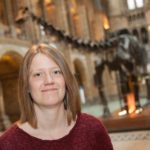
Tag: Charlotte A. Brassey
 Charlotte is a BBSRC Future Leader Fellow at Manchester Metropolitan University. Charlotte’s research focuses on animal biomechanics and functional morphology. For her fellowship, Charlotte is currently studying the form and function of the mammalian baculum (penis bone). After gaining her undergraduate degree in Geography and Geology at the University of Manchester, Charlotte stayed on to complete a PhD on the biomechanical modelling of long bones. She has also worked as a PDRA at the Natural History Museum, London, where she was part of a team responsible for digitizing and displaying ‘Sophie’ the Stegosaurus.
Charlotte is a BBSRC Future Leader Fellow at Manchester Metropolitan University. Charlotte’s research focuses on animal biomechanics and functional morphology. For her fellowship, Charlotte is currently studying the form and function of the mammalian baculum (penis bone). After gaining her undergraduate degree in Geography and Geology at the University of Manchester, Charlotte stayed on to complete a PhD on the biomechanical modelling of long bones. She has also worked as a PDRA at the Natural History Museum, London, where she was part of a team responsible for digitizing and displaying ‘Sophie’ the Stegosaurus.
Contact Details
Dr Charlotte A. Brassey, School of Science and the Environment, Manchester Metropolitan University, Manchester, M1 3FY
